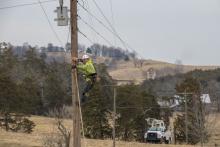How McAllen, Texas Quietly Built Residents a Free Wi-Fi Network over the Summer
Over the last few months, a number of cities across the country have recognized the pressing need to find a way to get those in their community without Internet access connected. In San Rafael, California, San Antonio, Texas, and Champaign, Illinois, local governments along with a variety of philanthropic, technical, and private partners have developed a host of innovative ways to bring fixed wireless solutions to neighborhoods in need.
The city of McAllen (pop. 140,000) — near the mouth of the Rio Grande, at the southern tip of Texas — offers some additional lessons to be learned and a blueprint for success for other local governments thinking of doing the same. Quietly over the summer, it collected broadband data, designed, and deployed a fixed wireless network which to date covers more than three dozen neighborhoods and provides free connectivity for the city’s students and residents.
Fiber From the Water Tower
Citywide Wi-Fi has been a long time coming in McAllen. Mayor Jim Dalson and the IT Department have wanted to do it for years, IT Director Robert Acosta said in an interview, but finding a way to pay for it has been the major barrier. In the meantime, his department has been adding wireless coverage to public spaces for the past half decade, at city parks, outside of government facilities, at the Museum of Art and Science, and at the Boys and Girls club. He also extended the network to traffic cameras, water towers, and other government facilities, and when the pandemic hit his department had more than 60 miles of fiber to call upon.




